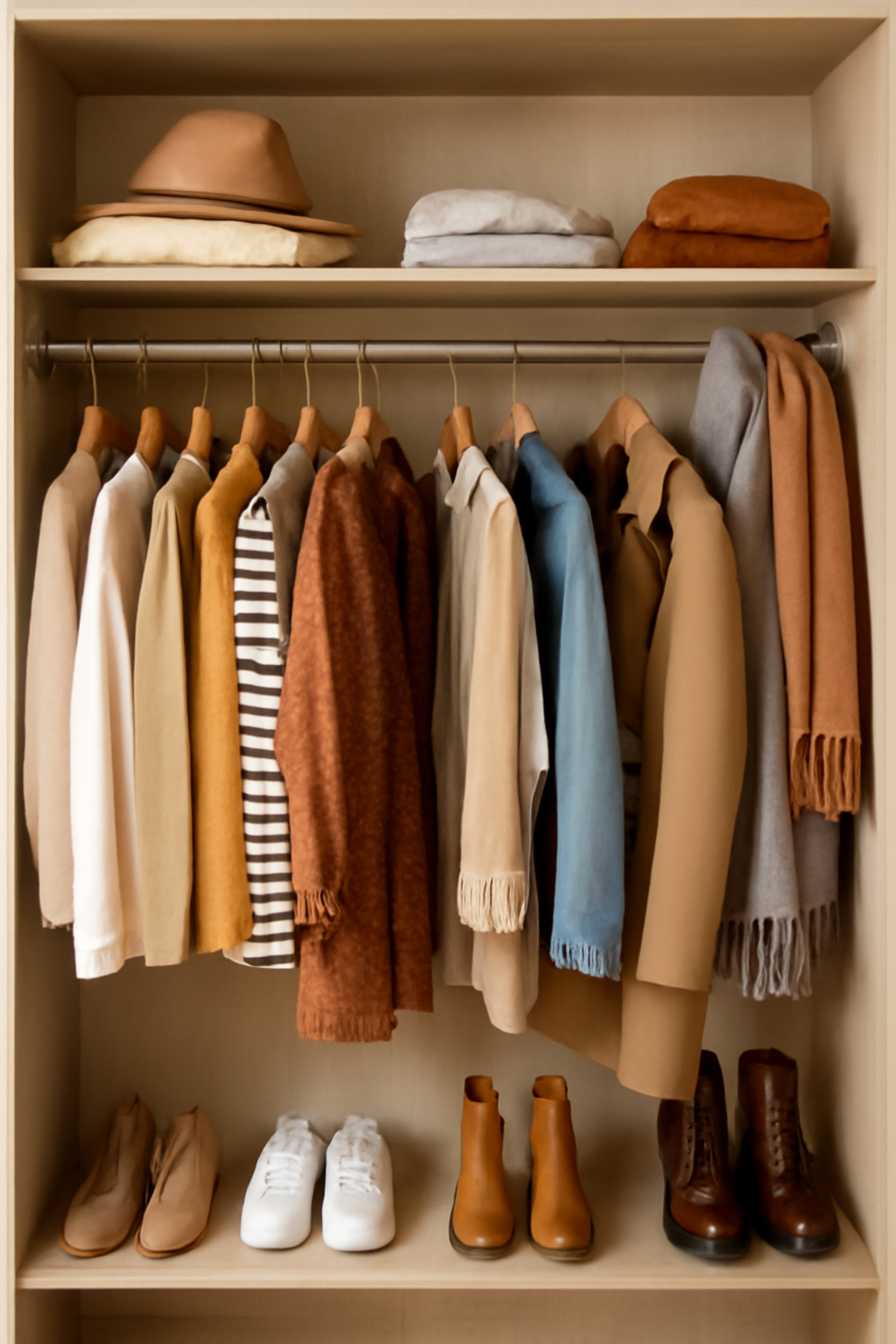
Master the art of styling your wardrobe for every season! With these easy tips, you’ll always be ready to transition your style as the weather changes.
Introduction
As the seasons change, so should your wardrobe. But how do you navigate the tricky task of transitioning between hot summers and chilly winters while keeping your style fresh and fashionable? Whether it’s a crisp autumn breeze or the first signs of spring, updating your wardrobe for the changing seasons is essential for staying stylish, comfortable, and prepared for anything Mother Nature throws your way.
In this blog, we’ll explore how to style your wardrobe for each season, ensuring that you can master the art of seasonal transitions while maintaining your personal style.
1. Embrace Layering for Versatility
When the temperature fluctuates between chilly mornings and warm afternoons, layering is your best friend. Layering allows you to adapt your outfit to changing temperatures throughout the day, without sacrificing style.
- Key Layering Pieces:
- Lightweight sweaters or cardigans for cooler mornings
- Button-up shirts that you can roll up or layer over t-shirts
- Denim jackets or blazers that elevate any outfit while adding warmth
- Scarves and hats to accessorize and add depth to your layers
Layering not only keeps you warm but also adds dimension to your outfit, allowing you to mix and match pieces for different looks without needing a complete wardrobe overhaul.
2. Invest in Seasonal Staples
While trends come and go, certain wardrobe staples are timeless and essential for every season. These pieces should be the foundation of your wardrobe, ensuring that you’re always ready for any seasonal shift.
- Spring & Summer Staples:
- Light, breathable fabrics like cotton, linen, and silk
- Sundresses, skirts, and shorts for warmer days
- Chic sunglasses to complete your summer look
- Comfortable sandals or stylish sneakers
- Fall & Winter Staples:
- Sweaters and cardigans for cozy layers
- Boots—perfect for colder months and stylish in many varieties
- Thick outerwear like trench coats, leather jackets, and parkas
- Wool scarves and gloves for extra warmth
By having a selection of these staples, you’ll be able to easily mix and match different pieces, ensuring you’re always dressed appropriately for the season without sacrificing style.
3. Play with Colors and Textures
The changing seasons are a great opportunity to experiment with new colors and textures. For example, as summer fades into fall, switch out light pastels for deeper tones like burgundy, mustard yellow, and forest green. Similarly, in spring, swap out dark hues for vibrant, pastel colors and floral prints that capture the fresh energy of the season.
- Spring and Summer Colors: Soft pastels, bright whites, vibrant florals
- Fall and Winter Colors: Rich jewel tones like emerald green, deep red, and mustard yellow; earthy tones like brown, burnt orange, and olive
Textures also play a huge role in seasonal styling. Lighter fabrics like linen and cotton work best in warmer weather, while heavier fabrics like wool, velvet, and cashmere are perfect for cooler months.
4. Focus on Transitional Outerwear
Outerwear is often the most significant change you’ll make when transitioning between seasons. A well-chosen jacket or coat can completely change the feel of your outfit, making it season-appropriate without compromising your style.
- Spring & Fall Outerwear:
A lightweight trench coat or denim jacket can be the perfect balance between style and practicality, offering enough coverage for the cooler mornings and nights. - Winter Outerwear:
For the colder months, wool coats, peacoats, or puffer jackets can offer warmth while remaining chic. Opt for neutral tones like black, beige, or navy to ensure they pair well with a variety of outfits.
5. Incorporate Accessories for Extra Flair
Accessories are a simple yet powerful way to elevate your seasonal wardrobe. From scarves to jewelry, the right accessories can add personality and flair to your outfit.
- Spring and Summer Accessories:
- Wide-brimmed hats to protect from the sun while adding style
- Statement sunglasses that not only protect your eyes but also complete your look
- Lightweight jewelry like delicate necklaces or layered bracelets
- Fall and Winter Accessories:
- Chunky scarves and gloves for warmth
- Wide-brimmed hats or beanies to keep you cozy while looking fashionable
- Layered gold or silver jewelry to add a bit of shine to dark winter outfits
6. Keep Your Wardrobe Versatile and Organized
A cluttered wardrobe can make seasonal transitions feel even more overwhelming. Keep your closet organized and versatile by investing in pieces that can be mixed and matched, and by maintaining a neat, streamlined space where you can clearly see all your options.
Consider organizing by season, and rotate out pieces that are no longer in season so that your space is optimized for the upcoming weather.
Conclusion
Styling your wardrobe for the changing seasons doesn’t have to be difficult. With a few key pieces, creative layering, and attention to colors, textures, and accessories, you can easily transition your outfits from one season to the next without losing style.
Remember, fashion is about expressing yourself, and every season offers a new opportunity to experiment with different looks. By building a solid foundation of seasonal staples and adding a few trendy pieces, you’ll always be ready to take on whatever the weather throws your way.
Disclaimer:
This blog is intended for informational and educational purposes only. The views expressed are personal opinions or general insights, not professional or legal advice. Readers should do their own research or consult relevant professionals before taking action based on this content
#SeasonalWardrobe #FashionTips #StyleGuide #FashionHacks #Carrerbook #Anslation #SeasonalStyle #WardrobeEssentials #AutumnFashion #WinterStyle #SummerWardrobe #SpringFashion #FashionInspiration #StyleTransition #WardrobeOrganization #FashionForAllSeasons #SeasonalTrends


Leave a Reply